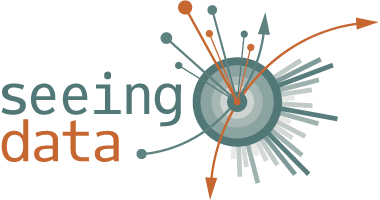Persuasive Data
Persuasive Data is a small-scale research project that investigates the persuasive uses of data visualisations in the context of campaigns about abortion. It is conducted by Rosemary Lucy Hill at the University of Leeds. Dr Hill previously worked on the Seeing Data project.
Data visualisations are sometimes argued to have the power to ‘change the world’ (Kosara et al., 2009; Few, 2008) because they can provide access to more data and can therefore enable more rational decision making (Cukier in Kosara et al., 2009). However, this suggests that data visualisations are transparent windows onto data, which, as we found on the Seeing Data project, they are anything but. Data visualisations are visual ‘texts’ or cultural ‘artefacts’ – that is, they are made by people in particular contexts and with specific aims in mind. We cannot, therefore, think of them as pure presentations of data (Kennedy et al., 2016). We need to think about the contexts of production, the ‘texts’ (i.e. the data visualisations themselves), and the consumption of data visualisations if we are to understand how visualisations might be able to change some people’s minds and maybe change the world. Or at least how they are used with those aims in mind.
But what happens when ‘changing the world’ means very different things to different groups? When it comes to abortion campaigning, data visualisations are increasingly being used by both pro- and anti-abortion groups. This turn to data raises important questions about what it means to ‘do good with data’ (Periscopic, 2014). Whose ‘good’ matters? Abortion-related visualisations therefore serve as a vital opportunity through which to interrogate how data is being used to persuade people and to investigate the kinds of visual rhetorical devices in use.
Research Questions
- How are data visualisations being used to persuade people within the abortion debate?
- How is data visualisation being used to evoke emotional responses to data?
Methods
- digital methods to identify abortion-related visualisations circulating within UK online media
- semiotic analysis of visualisations to investigate visual rhetoric and critically examine how accurately data is represented
Contributions
Understanding how data visualisations operate within campaigning contexts will contribute to:
- discussions of the political impact of data visualisations for doing good
- understandings of how visualisations work in specific contexts
- understandings of the emotional impact of data visualisations
- challenging misinformative visualisations
- establishing guidelines for good practice in advocacy
- understanding the limits of data visualisation to represent complex situations, such as those in the abortion debate, thus contributing new theoretical knowledge about data in society.
For more information contact Rosemary Lucy Hill.
@rosemarylhill

References
Few, S. 2008. What ordinary people need most from information visualization today. Perceptual Edge: Visual Business Intelligence Newsletter.
Kennedy, H., Hill, R.L., Aiello, G. and Allen, W. 2016. The work that visualisation conventions do. Information, Communication & Society. pp.1-21.
Kosara, R., Cohen, S., Cukier, J. and Wattenberg, M. 2009. Panel: changing the world with visualization. In: IEEE Visualization Conference Compendium: Citeseer.
Periscopic. 2014. home page. [Online]. Available from: http://www.periscopic.com/
